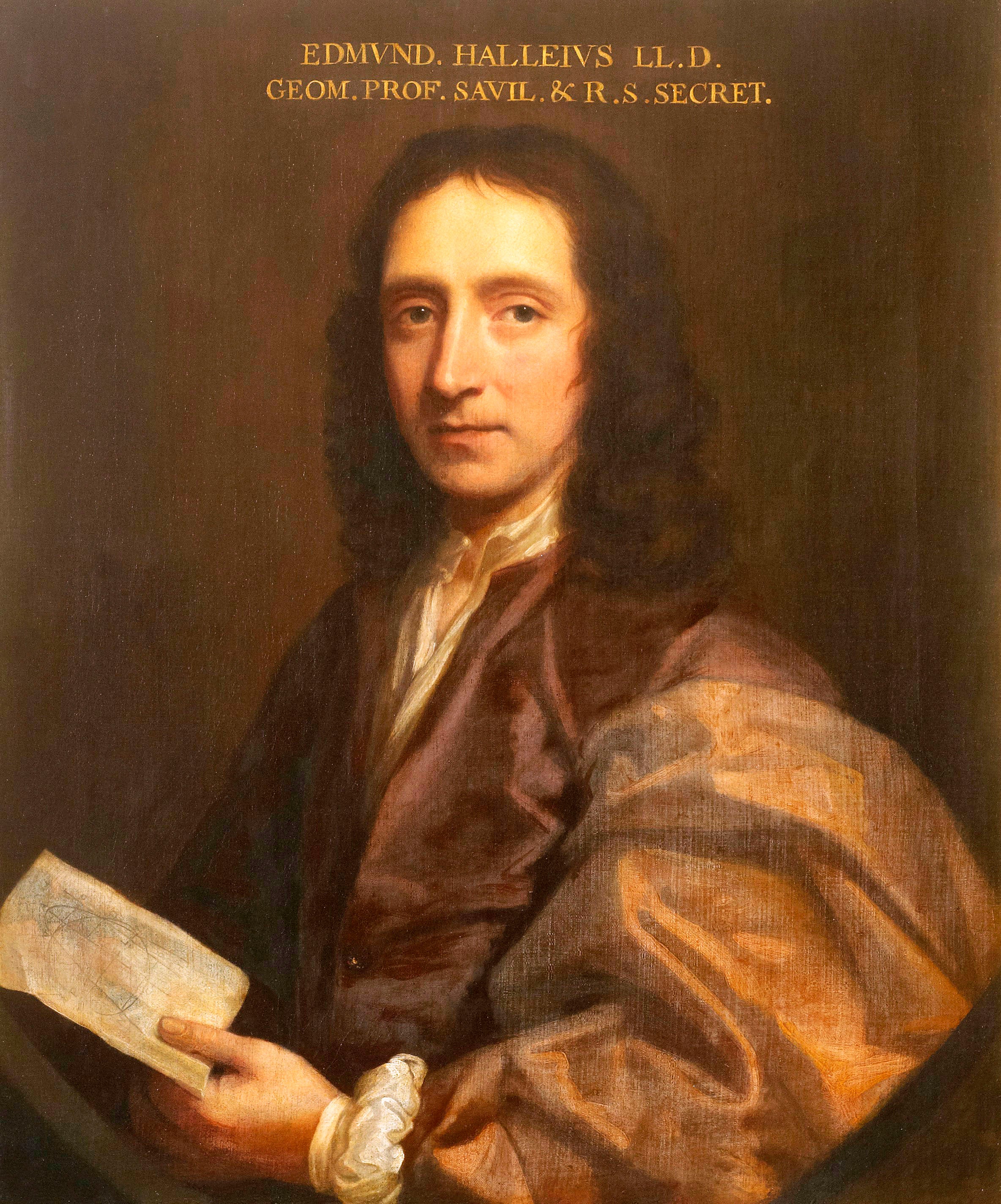
If you’re an amateur astronomer of a certain age, you’ll remember where you were in the winter of 1985–86, when Halley’s Comet passed Earth. I was in Halifax, Nova Scotia, which was relatively free of light pollution at that time, so I grabbed my dad’s binoculars and headed to the park across the street from our house. Shivering from the cold, I did manage to spy the comet, faint and fuzzy as it was. If you’re too young to have such a memory, you may well be looking ahead to 2061, when the comet will make its next appearance in our skies.
The comet became so well known that it can sometimes overshadow Edmond Halley’s other work — of which there was a great deal. In his early adulthood, Halley sailed the Atlantic to chart the southern stars. He later mapped Earth’s magnetic field and studied the tides and monsoons; he even tried to solve the problem of measuring longitude at sea. And that’s just a few of his pursuits.
On a visit to England in the last year, I walked in Halley’s footsteps in an effort to learn more about his life and legacy.
Halley’s memory is very much alive at the Royal Society of London. One of the world’s oldest scientific societies, it was founded in 1660 when it was granted a royal charter by King Charles II. Halley was elected a fellow of the society in 1678, and would later take on the role of secretary. Today, the Society’s headquarters occupy part of a stately townhouse in the heart of London.
Keith Moore, the head librarian, explained to me that the Society possesses two of the five known portraits of Halley — one, painted when the astronomer was in his 70s, hangs on a second-floor wall; an earlier portrait had been placed in storage, but Moore offered to retrieve it. Grasping it only with gloved hands, he leaned it gently against a cabinet. The painting, by the Scottish painter Thomas Murray, dates to the 1690s. It shows the youthful Halley with long hair — his own hair, rather than a wig (which would be the fashion just a few decades later). Halley was at the height of his powers, says Moore: “It’s when he’s doing his best work.” In Halley’s hand is a sheet of paper that appears to show cometary orbits. “Halley’s Comet is what he’s known for these days,” says Moore. “But in many ways, it’s the least of what he did.”
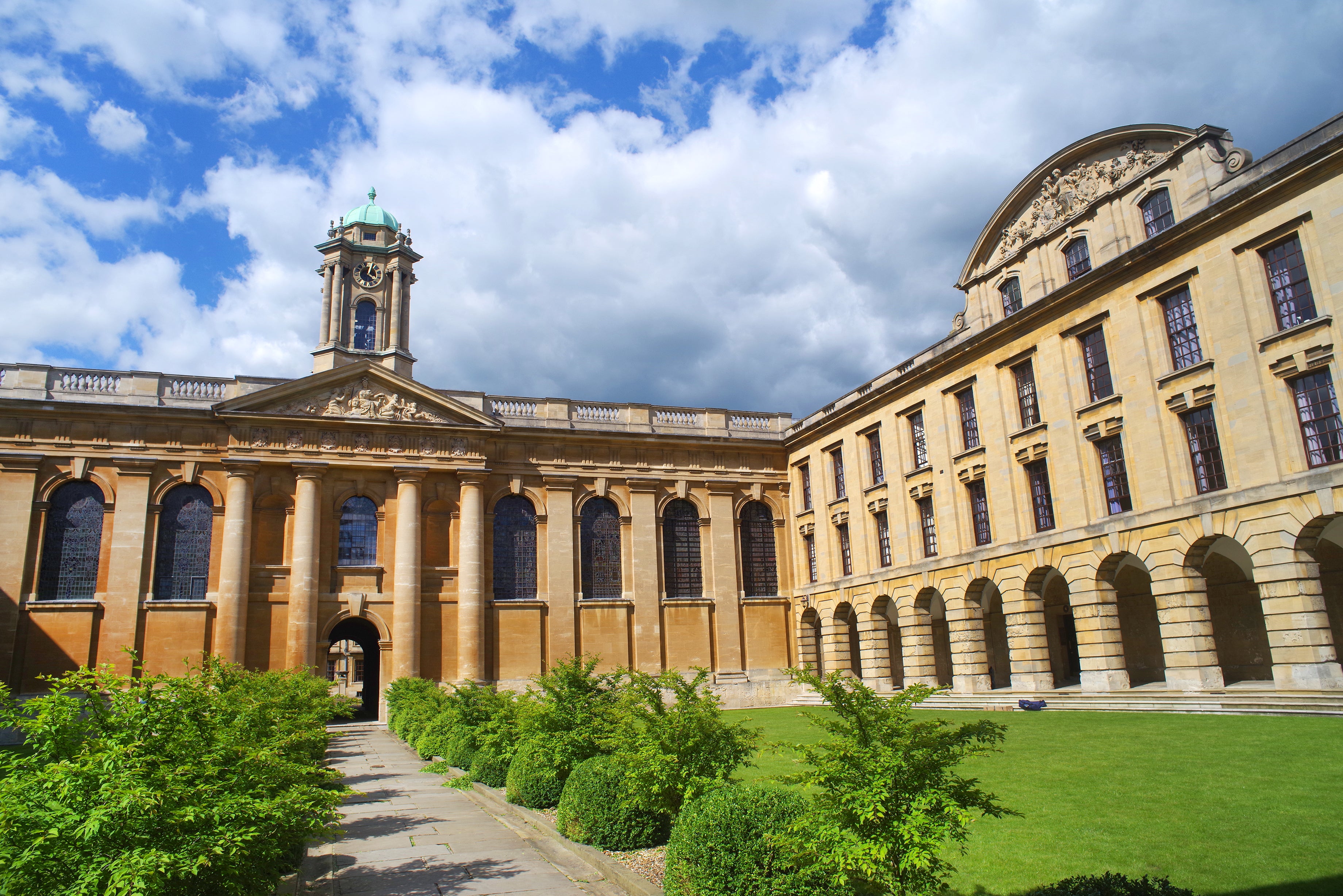
Young academic
Halley was born in 1656 in Haggerston, a village about a mile and a half (2.4 kilometers) northeast of the old city of London (and today fully absorbed in the capital’s urban sprawl). The son of a wealthy soapmaker, Halley showed a keen interest in mathematics and astronomy from an early age. In 1673, he enrolled at Queen’s College in Oxford; he would later return in 1704 as Savilian Professor of Geometry, a highly regarded chair position at the school.
While still an undergraduate, Halley published papers on the solar system and sunspots. As a precocious and sometimes overconfident young man, he wrote to John Flamsteed, England’s first astronomer royal, to alert him to mistakes he had found in published tables on the positions of Jupiter and Saturn, and in the star positions published by the Danish astronomer Tycho Brahe. This sparked a working relationship between the two men for years to come.
Although his academic life is well documented, we unfortunately know little about Halley’s day-to-day life in either London or Oxford. We at least know he married Mary Tooke in 1682, with whom he later had three children. Beyond that, though: “The fascinating thing about Halley is just how little we know about his personal life,” says Rob Iliffe, a historian of science at Oxford. “We know a lot about his career as an astronomer, but not much else.”
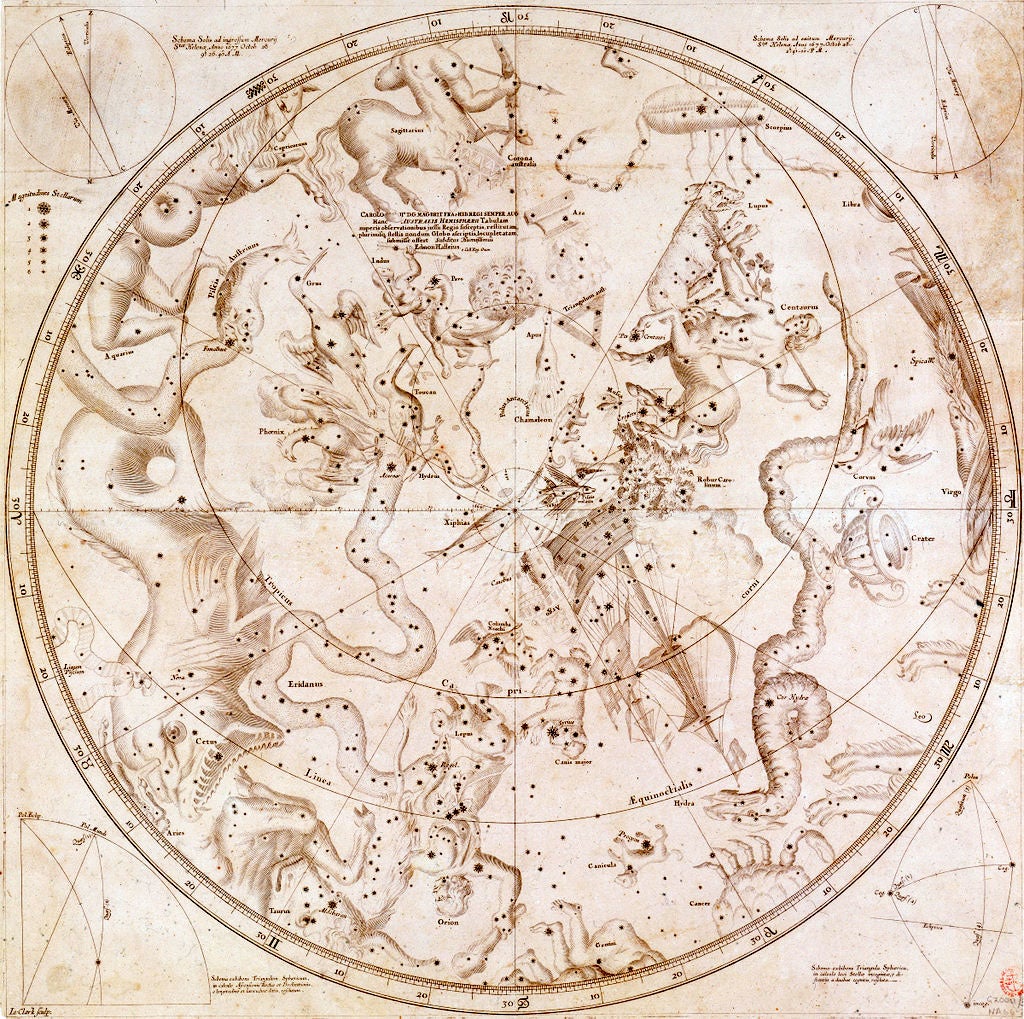
Observe and document
The early years of Halley’s career were not just filled with books and charts, but also with adventure. In 1676, not long after his 20th birthday, he sailed to St. Helena, a remote South Atlantic Island 1,200 miles (2,000 km) from the southwestern coast of Africa, determined to accurately chart the southern stars.
Unfortunately, the island’s rainy weather made that difficult. He tried to observe both a solar eclipse and a lunar eclipse in the spring of 1677, but on both occasions was plagued by clouds and overtaken by wind. In a letter to the mathematician and surveyor Jonas Moore, Halley wrote that “such hath been my ill fortune” that clouds “sometimes for some weeks together hath hid the Stars from us.” He had better luck with a transit of Mercury, which he observed Oct. 28, 1677.
Halley persevered, and after about two years, succeeded in charting positions of 341 stars in the southern sky. He returned to England the following spring. His catalog of the southern stars was titled Catalogus stellarum Australium (Catalog of Southern Hemisphere Stars). Along with the star charts, the book included an account of the transit of Mercury, a discussion of lunar parallax, and a planisphere of the southern sky.
It was around this time that Halley pondered the motion of the Moon and the planets. He knew of Kepler’s theory of elliptical orbits but wondered why orbits assumed that particular shape. In 1684, he visited Cambridge to consult with Isaac Newton, who at that time was still “an obscure professor,” as Iliffe puts it. (Newton had been thinking deeply about theology and alchemy, not so much about physics.) To Halley’s surprise, he found that Newton had already claimed to have solved the problem some years earlier. Unable to find his original calculations, he promised to redo them. Newton made good on his promise with a small book titled De motu corporum in gyrum (On the Motion of Bodies in an Orbit); over the next few years Newton would expand this work, publishing the resulting tome in 1687 as Philosophiæ Naturalis Principia Mathematica (The Mathematical Principles of Natural Philosophy), widely seen as one of the most influential scientific works ever written. After initially nudging Newton toward publishing this book, Halley continued to support him by editing and financing the project.
Related: The top 10 astronomy books of all time
“We know that Halley had worked quite closely in helping Newton, not just in terms of the book’s printing,” says Iliffe. “He was commenting in technical detail on some of the things that Newton was saying. So, he had a hand in more than one way in the emergence of the Principia.”
By the time of that first meeting with Newton, Halley had also spent some time thinking about comets. In the fall of 1682, he carried out a series of observations of the comet that would eventually bear his name. He found that the object bore a striking resemblance to those comets viewed in 1531 and 1607. He concluded that the comet must be moving in an orbit with a period of roughly 75 years, predicting that it would return in 1758. It did, right on schedule, though Halley was not alive to see it. But the return of Halley’s Comet served as an enormous vote of confidence for Newton’s ideas. It was “the key piece of evidence to convince people of the general truth of Newton’s theory,” Iliffe says. Comets were now tamed, their appearance no longer a great mystery.
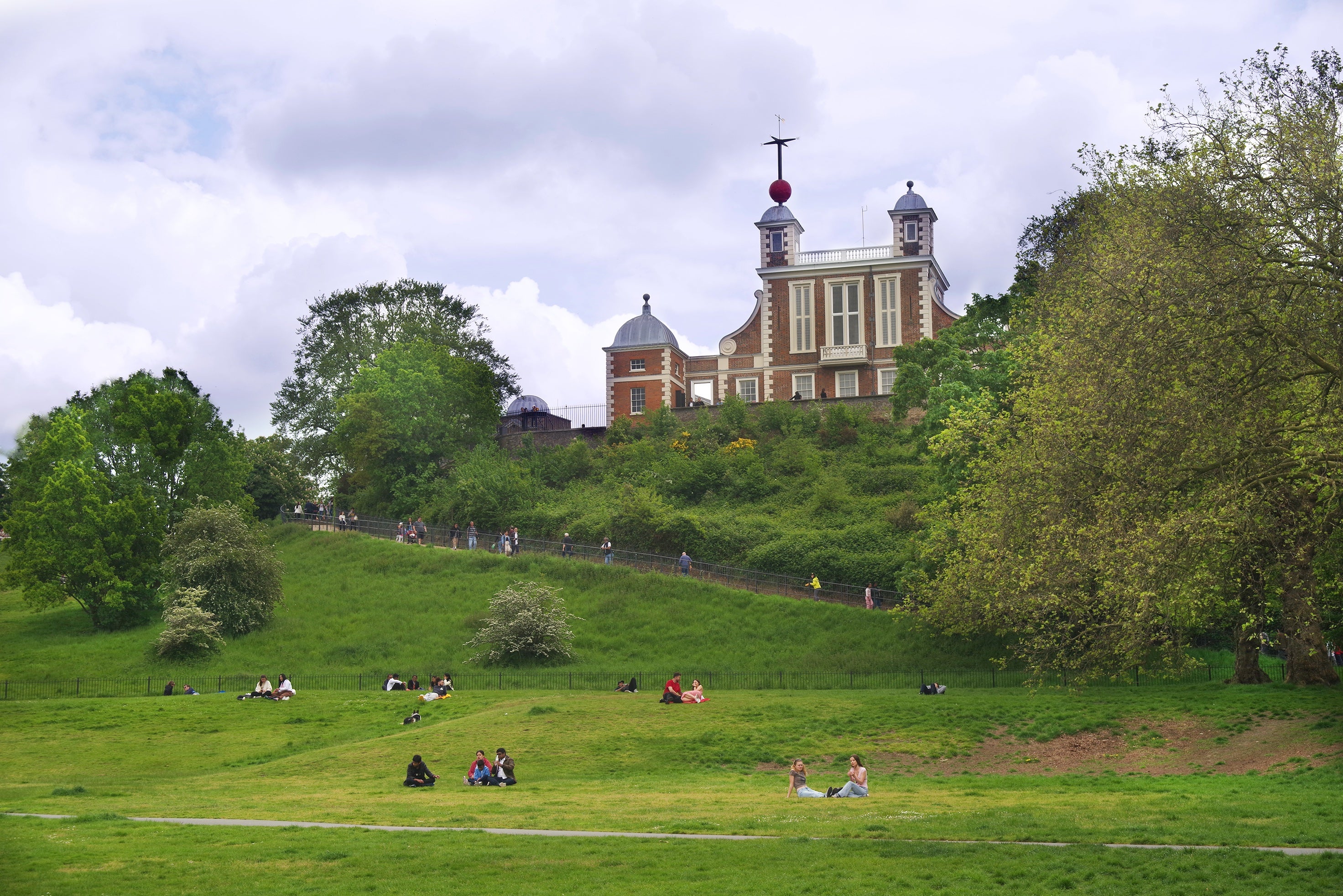
Mapmaker
Halley would take to the Atlantic several more times, including two voyages in the final years of the 1690s, with the aim of mapping Earth’s magnetic field. Because the magnetic pole is several hundred miles from the geographic pole, a compass needle can diverge from true north by several degrees, depending on one’s location. That made detailed knowledge of Earth’s magnetic field vital for navigation, and therefore a priority for the Royal Navy.
But it was not always smooth sailing. As Halley approached the Cape Verde Islands in the winter of 1699, his ship, the HMS Paramore, was fired on by an English warship that suspected Halley’s vessel was a pirate ship flying false colors. (The likely problem was that the Paramore was a pink — a small, flat-bottomed ship with a narrow stern that was somewhat of a rarity in the British navy, and therefore not immediately recognizable.) But they were able to get away unscathed.
Later in that same voyage, Halley faced near-mutiny on board his own vessel from his first mate, Lieutenant Edward Harrison, who was deeply resentful of his command. Though Halley was a commissioned officer, his subordinates, egged on by Harrison, questioned his competence. Facing growing unrest from his crew, he cut the voyage short and returned to England more than a year ahead of schedule. It was only later that Halley learned the reason for Harrison’s wrath: Halley had written a dismissive review of Harrison’s anonymously published pamphlet, Idea Longitudinis, which attempted to solve the problem of determining longitude at sea. In spite of these misadventures, Halley was, as far as we know, as skilled a captain as any other in the navy’s service.
Further adventures awaited Halley a few months later, when the Paramore sailed the Atlantic’s southern reaches. At one point, his crew spied three unusually flat, treeless “islands” that were “covered with snow, milk white with perpendicular cliffs all round them.” These were, of course, icebergs, and as fog descended, the ship came dangerously close to becoming trapped in ice. Luckily, the Paramore was able to escape northward, eventually reaching the island of Tristan da Cunha, the most remote inhabited archipelago in the world, where Halley was able to “recover the warm [Sun] who we had not seen in a fortnight.”
Home once more
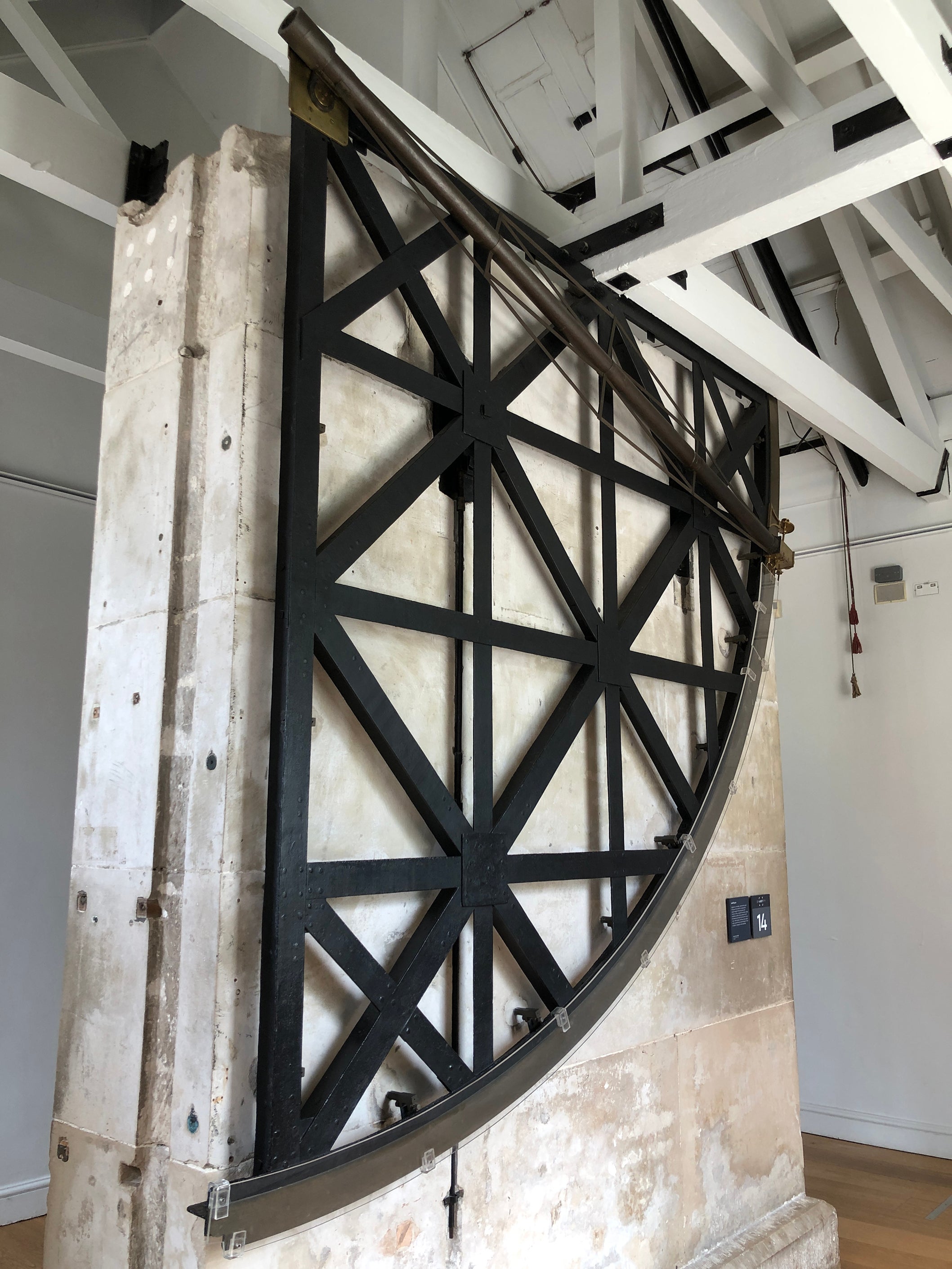
After years of globetrotting, Halley returned to England where he was named astronomer royal in 1720, following the death of Flamsteed. On arriving at the observatory in Greenwich, however, he was met with a surprise. “He found that it had been stripped of its instruments by his predecessor’s wife, Margaret Flamsteed,” explains Louise Devoy, senior curator of the Royal Observatory Greenwich (as the institution is now called). Mrs. Flamsteed “pretty much cleared out the observatory, arguing that Flamsteed had paid for the instruments himself, so they were his property.” Halley eventually persuaded the government to pay him an extra 500 pounds sterling (roughly £130,000 in today’s currency, or $103,000) to acquire new equipment.
Halley also noticed that the stone wall on which Flamsteed had mounted his mural arc — and which effectively marked the prime meridian, the “zero” of longitude — was beginning to tilt as the ground beneath it subsided. Halley erected a new, sturdier wall a short distance away, on which he mounted his own 8-foot (2.4 meters) mural quadrant. Attached to it was a telescope that pivoted in the plane of the meridian, allowing the user to measure the altitude of a star as it reached the highest point in its arc across the sky. It could be used in conjunction with an accurate pendulum clock to determine the right ascension and declination of a heavenly body by noting the sidereal time at which the object crossed the meridian. The keen-eyed visitor will notice that there are in fact three “prime meridians” marked on the floor: Halley’s; then one established by his successor, James Bradley, a dozen or so feet farther east; and finally, still farther east, the one set by George Airy, who would serve as astronomer royal through the middle part of the 19th century. It was Airy’s line that was chosen in 1884 as the prime meridian of the world — and whose extension, marked by a brass line that stretches across the observatory’s plaza, is now a prime spot for tourist selfies. However, modern GPS systems actually use yet another imaginary line about 330 feet (100 m) farther east; this is the International Reference Meridian, or IRM.
Halley held the position of astronomer royal until his death at the age of 85. He was laid to rest about a mile (1.6 km) south of the observatory, in the cemetery of St. Margaret’s Church in Blackheath — the resting place of his wife, who predeceased him six years earlier in 1736. When the church was rebuilt in the 1840s, the original gravestone was moved to Greenwich, where it can be seen today, mounted on a wall at the observatory. Meanwhile, a new monument was erected at St. Margaret’s, though unfortunately its inscription is now badly eroded. The Latin text reads, in part: “Beneath this gravestone, Edmond Halley, unquestionably the most eminent of the astronomers of his age, rests peacefully with his dearest wife. … [A]s he was a man so greatly cherished by his fellow-citizens during his lifetime, so let a grateful posterity venerate his memory.” In all, five members of Halley’s family are buried in the grave, along with John Pond, who served as Astronomer Royal from 1811 to 1835. Halley is also honored with a memorial plaque in Westminster Abbey, not far from the tombs of other notable British minds such as Newton, Charles Darwin, and Stephen Hawking.
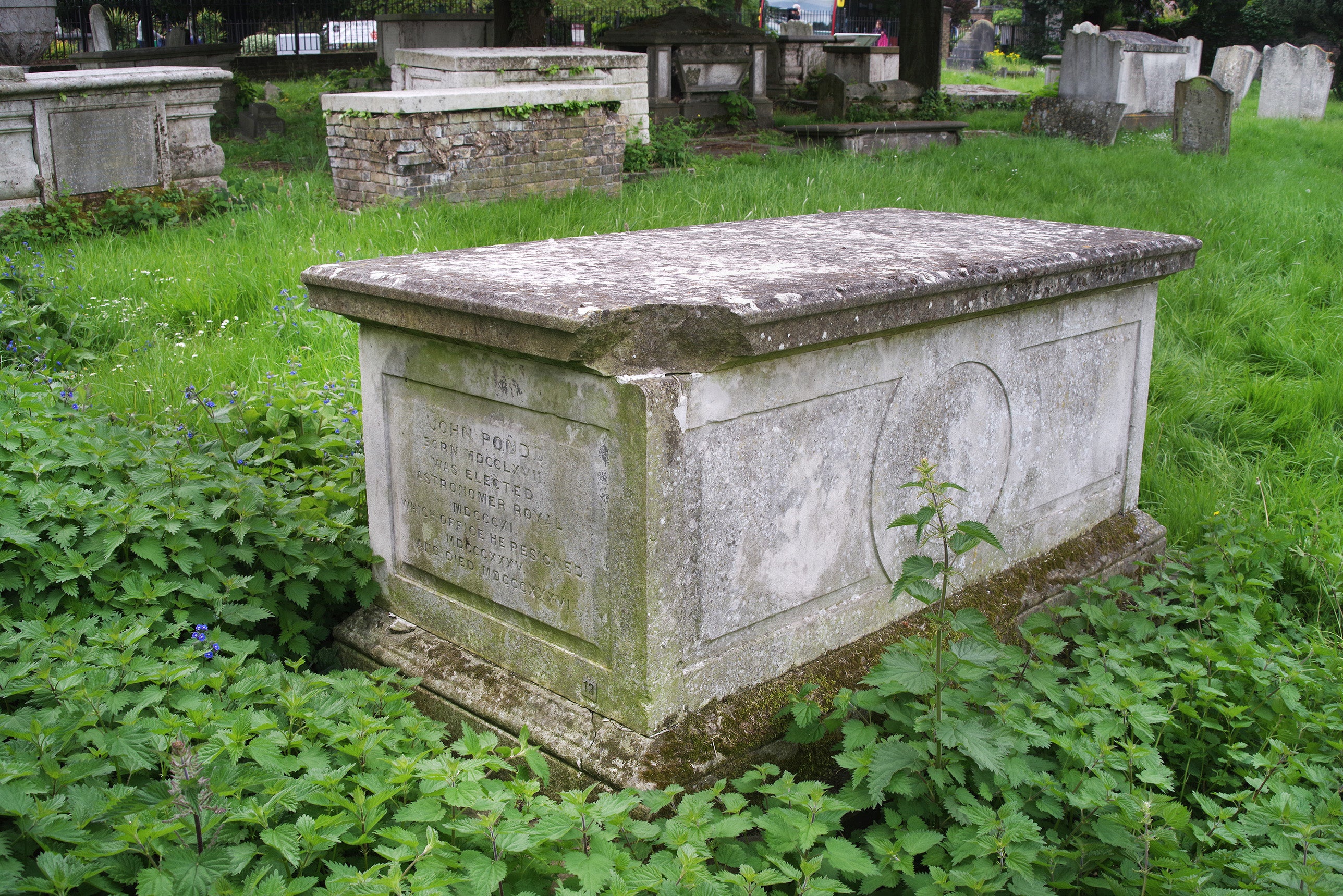
A polymath’s legacy
It is difficult to describe all of Halley’s contributions to science during his lifetime. Halley’s investigation of the tides, which he pursued for decades, was among his most noteworthy accomplishments; together with his geomagnetic surveys, they position Halley as one of the first modern geophysicists. This eventually led him to try to scientifically date Stonehenge, based on estimates of changes in Earth’s magnetic field over time. He dated it to 456 b.c.e. — an inaccurate estimation by a couple of thousand years, but one which opened the door for more research in the area.
He also designed and built a diving bell, whose occupants breathed fresh air sent down from the surface in weighted barrels. In one demonstration, Halley and five companions descended to 60 feet (18 m) beneath the Thames River, remaining there for an hour and a half. The list of his endeavors goes on.
“It does seem a shame that people only know him because of the comet, when there are so many other contributions to his name,” says Devoy, and Moore adds, “He’s one of my favorite scientists, because he’s so prolific. He did so many things. He’s not one of those scientists who plows a single furrow.”
Halley was also more adventurous than the average scientists he was around, like Newton, who spent virtually his entire adult life in Cambridge and London. “Newton doesn’t move; he gets other people to send results to him, so he can crunch that data,” says Moore. “Whereas Halley is not afraid to get out into the world.”
His comet, meanwhile, continues its silent sojourn. Last December, it reached the most distant point in its orbit, known as aphelion; at that moment, it lay over 35 times farther from the Sun than the Earth is on average, or 3.28 billion miles (5.27 billion km) out, beyond the orbit of Neptune. But rest assured, it will be back.
Halley proved it.









